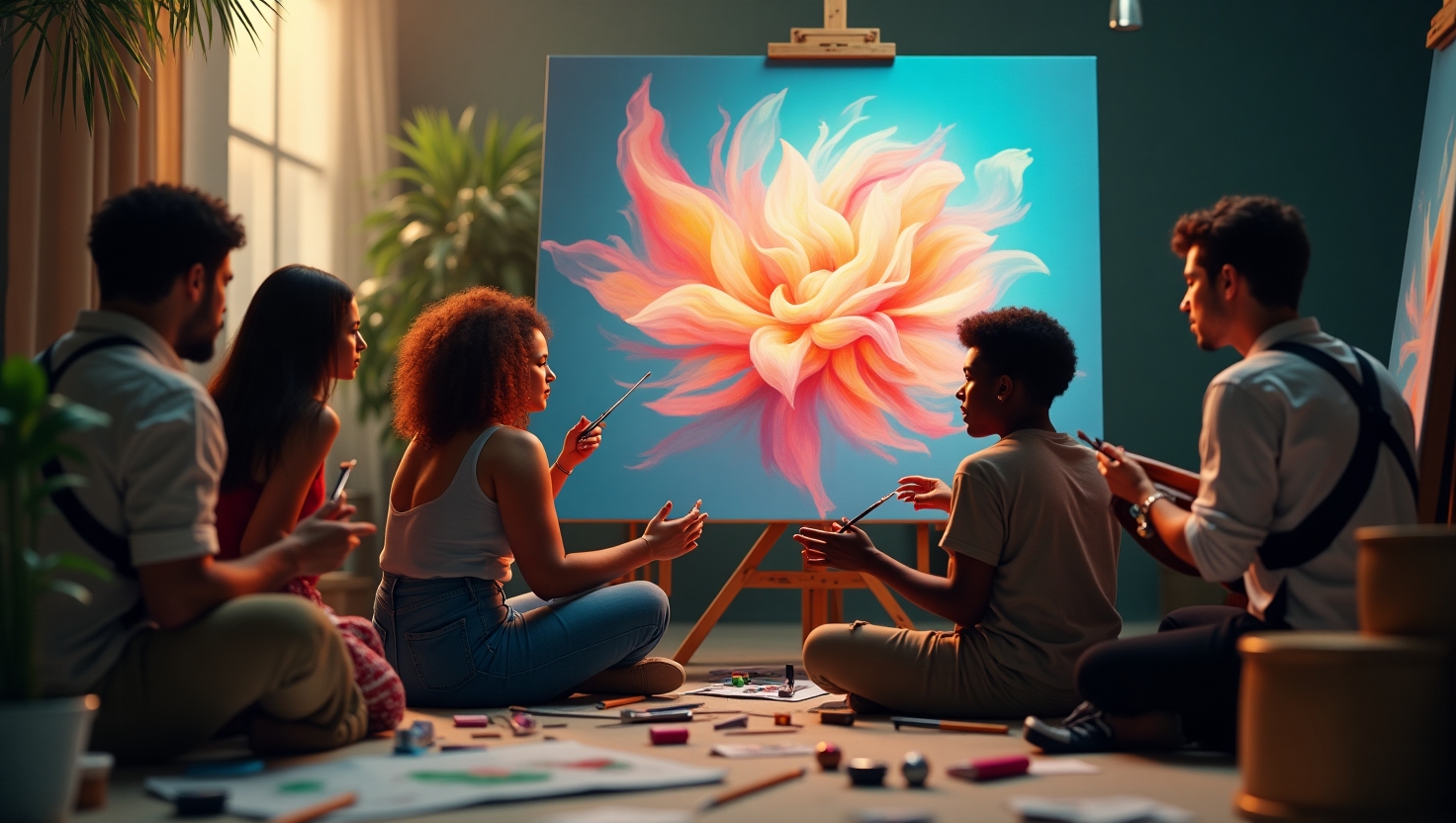AI and Creativity: Transforming Our Artistic Landscape
Intro
Artificial Intelligence (AI) and creativity are two realms that, until recently, seemed worlds apart. However, the intersection of these domains is rapidly redefining artistic expression and opening new avenues for innovation. As AI technology advances, it not only aids in automating tasks and analyzing data but also plays an increasingly prominent role in creative processes across various fields. This transformation is characterized by a surge in creative AI applications that challenge traditional notions of what it means to be creative. In this article, we’ll explore how AI is reshaping the art world and ponder the broader implications for the future of creative work.
Background
The relationship between AI and art has been evolving for decades. Early applications of AI in art can be likened to the proverbial first strokes of paint by pioneers attempting to emulate human creativity. In the 1970s, Harold Cohen developed AARON, a computer program designed to produce original drawings, raising questions about credit and originality in art. Fast forward to today, AI’s capabilities have vastly expanded, enabling it to create intricate paintings, compose music, and even write poetry. AI in art has evolved from a novelty to an influential tool that artists increasingly rely on to push creative boundaries.
These developments provide a historical context that helps us understand AI’s trajectory in creative industries. AI’s ability to learn from vast datasets and its capacity for pattern recognition continue to make it an indispensable asset for artists seeking to transcend human limitations.
Trend
Current trends in creative AI applications illustrate just how deeply AI is ingrained in the artistic process. Artists and technologists alike embrace AI to explore new mediums and techniques. NFTs, or non-fungible tokens, often incorporate AI-generated art, pushing the boundaries of ownership and originality in the digital realm. Consider the example of \”Portrait of Edmond de Belamy,\” an AI-generated artwork that auctioned for an astonishing $432,500 at Christie’s in 2018. AI algorithms brought this piece to life by analyzing a dataset of thousands of portraits.
Beyond visual art, AI is making strides in music and literature. AI-driven compositions now produce innovative melodies that blend styles and genres, while AI-authored novels and articles challenge our understanding of narrative and creativity. These trends highlight the increasing influence of AI on creativity, drawing both enthusiasts and skeptics to the unfolding dialogue.
Insight
The integration of AI in art presents both opportunities and challenges. On the one hand, AI offers artists limitless potential to experiment and innovate, automating tedious processes and inspiring novel ideas, which poses the question of authenticity in artistic expression. For instance, when AI aids in the creation of a painting or a song, who should be credited—the machine, the coder, or the human collaborator?
Ethical considerations also arise when discussing AI and creativity. Concerns about the potential replacement of human artists by AI persist, resonating with debates around automation in other industries. While AI tools may democratize access to creative expression, they also prompt us to re-evaluate the essence of creativity itself. Similar to how AI is reshaping how we travel, as seen in this article, it is influencing how we think about art and originality.
Forecast
Looking ahead, we can anticipate a future where AI will further influence the creative work ecosystem. AI’s integration into augmented reality (AR) and virtual reality (VR) environments promises to redefine immersive art experiences, making them more interactive and personalized. Artists may soon leverage AI to produce hyper-realistic simulations or entire virtual worlds, echoing the trajectory discussed in another resource, but in a more visually-centric domain.
Additionally, advancements in AI might lead to more sophisticated algorithms capable of mimicking human intuition and emotional depth, setting the stage for artwork that resonates on an even more profound level. As AI continues to evolve, so too will the artistic possibilities.
CTA
As we stand on the cusp of this exciting new era, we encourage you to explore your own creative endeavors with AI tools. Whether you’re an artist, musician, or writer, AI offers a wealth of resources to enhance and expand your artistic vision. Share your thoughts and projects on social media to contribute to the ongoing discussion about the future of AI and creativity. How do you envision AI influencing your creative journey? We invite you to be part of this evolving narrative, which blends human ingenuity with AI’s burgeoning potential.
